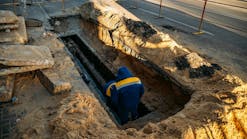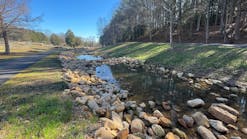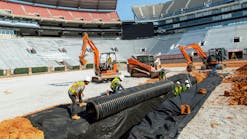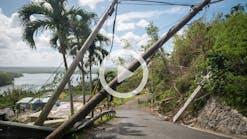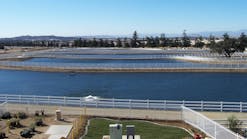Mitigate the Melt
About the author: William "Bo" Gell is global product manager, wastewater, for Xylem Inc. Gell can be reached at [email protected]
With warmer temperatures taking hold this winter, many communities are facing a deluge of melting snow with nowhere to go but down. SWS Managing Editor Amy McIntosh spoke with Bo Gell, global product manager, wastewater, for Xylem Inc., about how this melting snow can lead to residential flooding.
Amy McIntosh: How does flooding from snowmelt differ from flooding that comes from a rain event?
Bo Gell: The biggest difference with snowmelt [events] is that you may have several per season. For example, central New York had 60-plus in. of snow. We were at 50°F last week, so everything that was on the ground has melted. That is not typical for a season. So you cannot always predict when that snowmelt is going to occur.
McIntosh: How can people prepare for flooding while snow is still on the ground?
Gell: There are five ideas you should keep in mind. One is to know where you live, and know if you are at a risk for flooding. Many people move in and out of an area, so they may not know, historically, if that area is at risk of flooding. So we all need to make sure that we are covered as best we can with the proper insurance. But even if you are outside of a flood area, you can still have flooding. Flooding can be very local.
The second point is to make sure that your drainage is working properly. Particularly in the snow season, you might have ice dams, which may affect the way the gutters are draining. You may have drainage ditches that run adjacent to your property. Perhaps leaf collection did not happen timely and those may be clogged with leaves. If it is an urban [environment] maybe it is the sewer grates that need to be cleared of snow and debris. That is something that you can call into the city to have them take care of.
The third idea is to make sure that your drainage is flowing away from the foundation. Downspouts have a way of either clogging with debris or the downspouts can become dislodged by the ice or the snow. You need to make sure you are prepared to move that water away from your foundation.
The fourth point would be if you have a basement or a crawl space, you need to make sure that your sump pump is working. I think that is one area that we do not pay a lot of attention to until it is too late.
The fifth point is: Do you have a recommended battery backup system? We tend to lose power sometimes in the case of a bad storm, which may be associated with snowmelt. Has the battery in that battery backup system been serviced annually at least? Does the system work?
McIntosh: How common is it for the average homeowner to have flood insurance?
Gell: I understand that about 20% or so of flooding claims come from people that are outside of a flooding area, so you can see, flooding can be local. There may be some other local environmental factor, [such as] a little extra heavy snowfall; the normal drainage may not able to handle it. It shows that there’s a bit of attention needed [to be paid] to the details of your area. I think everyone is going to have to take a look at exactly where they are and what they might see as potential flooding even if they are not in the standard flooding area.
McIntosh: If flooding does occur, what are effective methods for cleanup?
Gell: Obviously, prevention is the best, because floods can bring damage, disease, [and] loss of property and life. The best thing is to be prepared. You need to always do your part to protect yourself from a possible flooding event. We know that floods can costs tens of thousands of dollars. Past any minor flooding event, you would need to call an expert in, because flooding causes tremendous damage to a house that may not be seen for some time—for example, mold in the walls and other things. So if it is something that can be mopped up quickly, it is very important that it happens quickly. Above all, make sure that any time you see any flooding, you do not enter that area unless it is known to be safe.

